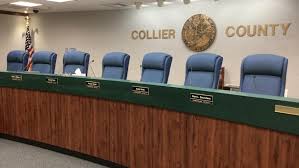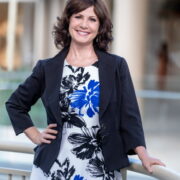 When you talk about resiliency these days, it’s likely you’re referring to the shoreline. That’s certainly the case in Florida, the flattest state in the country with 1,350 miles of coastline and 76% of its residents living in coastal communities. Storms and flooding put up to a trillion dollars of property at risk.
When you talk about resiliency these days, it’s likely you’re referring to the shoreline. That’s certainly the case in Florida, the flattest state in the country with 1,350 miles of coastline and 76% of its residents living in coastal communities. Storms and flooding put up to a trillion dollars of property at risk.
Thomas Jeffery Ph.D. of CoreLogic says, “Of all natural disasters, storm surge has historically been the deadliest and most destructive hazard we deal with.”
That applies in spades to southwest Florida, as we learned with Hurricane Ian. Beaches were washed away and thousands of structures were destroyed. Flooding extended well inland. Property values declined and insurance rates went through the roof.
Riskfactor.com says the Naples area has 6,700 properties with a chance of being severely damaged by floods over the next 30 years. CoreLogic says greater Naples is 9th in the country at greatest risk from coastal storms, with a reconstruction cost value of $43 billion.
And shoreline vulnerability extends well beyond water incursion. There’s also toxic algae and Red Tide and inland pollution that fouls the coast.
No question, the risks are many. How do we provide protection and, more importantly, resilience? We currently have a patchwork of agencies and self-appointed organizations offering advice and dealing with parts of the problem. That includes numerous departments in city and county government, regional “waterkeepers,” the Conservancy of SWFL and others — all competent and well meaning, but fragmented.
The Rockefeller Foundation has suggested another approach. Recognizing the stress facing communities around the world, it established the “100 Resilient Cities” program in 2013, an initiative that morphed into the “Resilient Cities Network,” a movement that’s active today.
Central to it all was the establishment of the Chief Resilience Officer (CRO), one person dedicated to coordinating the whole thing.
Gov. Ron DeSantis got on board early and appointed a Florida CRO in 2019. Wesley Brooks Ph.D. serves in that capacity today. Scores of local CROs have since been hired and serve in cities and counties around the state.
Would a CRO be beneficial to Collier County? Most probably.
Imbedded in county government and reporting to the county manager or deputy county manager, the CRO would be the point person on shoreline resilience, providing advice in addition to monitoring and coordinating efforts. He or she would consolidate plans, discourage redundancy and expedite programs, working closely with departments in the city and county.
As we see it, this would be a standalone position. Adding another layer of government bureaucracy is neither recommended nor needed.
We propose the focus be solely on the shoreline area. Inland resiliency would not be part of the remit. The CRO would not deal with things like drought, crop recovery, traffic, population growth and wildlife.
Rather, we feel he or she would concentrate on things like building codes, property protection, drainage, tidal lagoons, diversion canals, pollution control, building and roadway elevation, beaches and mangroves. Experts would be consulted every step of the way and, where appropriate, grants would be sought.
The highly publicized U.S. Army Corps of Engineering study — unlikely to deliver anything before 2030, if approved at all — would be monitored as part of the overall program.
In conclusion, we feel that establishing a Collier County CRO would be a useful step toward protecting our shoreline.
The Collier Citizens Council plans to take a closer look. ¦
The Collier Citizens Council is a coalition of civic leaders whose purpose is to represent interests of county residents by influencing local and state policies.
 The Collier Citizens Council is pleased to announce that Linda Oberhaus, CEO of the Shelter for Abused Women & Children, is the winner of this year’s Murray Hendel Civic Achievement Award, given annually for extraordinary contributions to the community.
The Collier Citizens Council is pleased to announce that Linda Oberhaus, CEO of the Shelter for Abused Women & Children, is the winner of this year’s Murray Hendel Civic Achievement Award, given annually for extraordinary contributions to the community.


 A public forum featuring the county commissioner candidates for District 3 and District 5 will be held on May 8th in the County Commission chambers at 3299 Tamiami Trail East, Suite 303. The forum will be televised live on Comcast 97/Summit 98 and will be available for later viewing on the county website.
A public forum featuring the county commissioner candidates for District 3 and District 5 will be held on May 8th in the County Commission chambers at 3299 Tamiami Trail East, Suite 303. The forum will be televised live on Comcast 97/Summit 98 and will be available for later viewing on the county website.
 In a 2016 Straw Ballot, County voters authorized a study to determine the benefits of combining all Fire Agencies in unincorporated Collier County into two (2) or one (1).
In a 2016 Straw Ballot, County voters authorized a study to determine the benefits of combining all Fire Agencies in unincorporated Collier County into two (2) or one (1).
 When you talk about resiliency these days, it’s likely you’re referring to the shoreline. That’s certainly the case in Florida, the flattest state in the country with 1,350 miles of coastline and 76% of its residents living in coastal communities. Storms and flooding put up to a trillion dollars of property at risk.
When you talk about resiliency these days, it’s likely you’re referring to the shoreline. That’s certainly the case in Florida, the flattest state in the country with 1,350 miles of coastline and 76% of its residents living in coastal communities. Storms and flooding put up to a trillion dollars of property at risk.
 Oxygen is an essential component of the aquatic environment. The most important measurement of water quality, oxygen indicates a waterbody’s state of health – that is, the ability to support aquatic life. Watersheds with oxygen concentrations of 5 milligrams per liter (mg/L) or higher can support well-balanced, healthy biological communities.
Oxygen is an essential component of the aquatic environment. The most important measurement of water quality, oxygen indicates a waterbody’s state of health – that is, the ability to support aquatic life. Watersheds with oxygen concentrations of 5 milligrams per liter (mg/L) or higher can support well-balanced, healthy biological communities.





